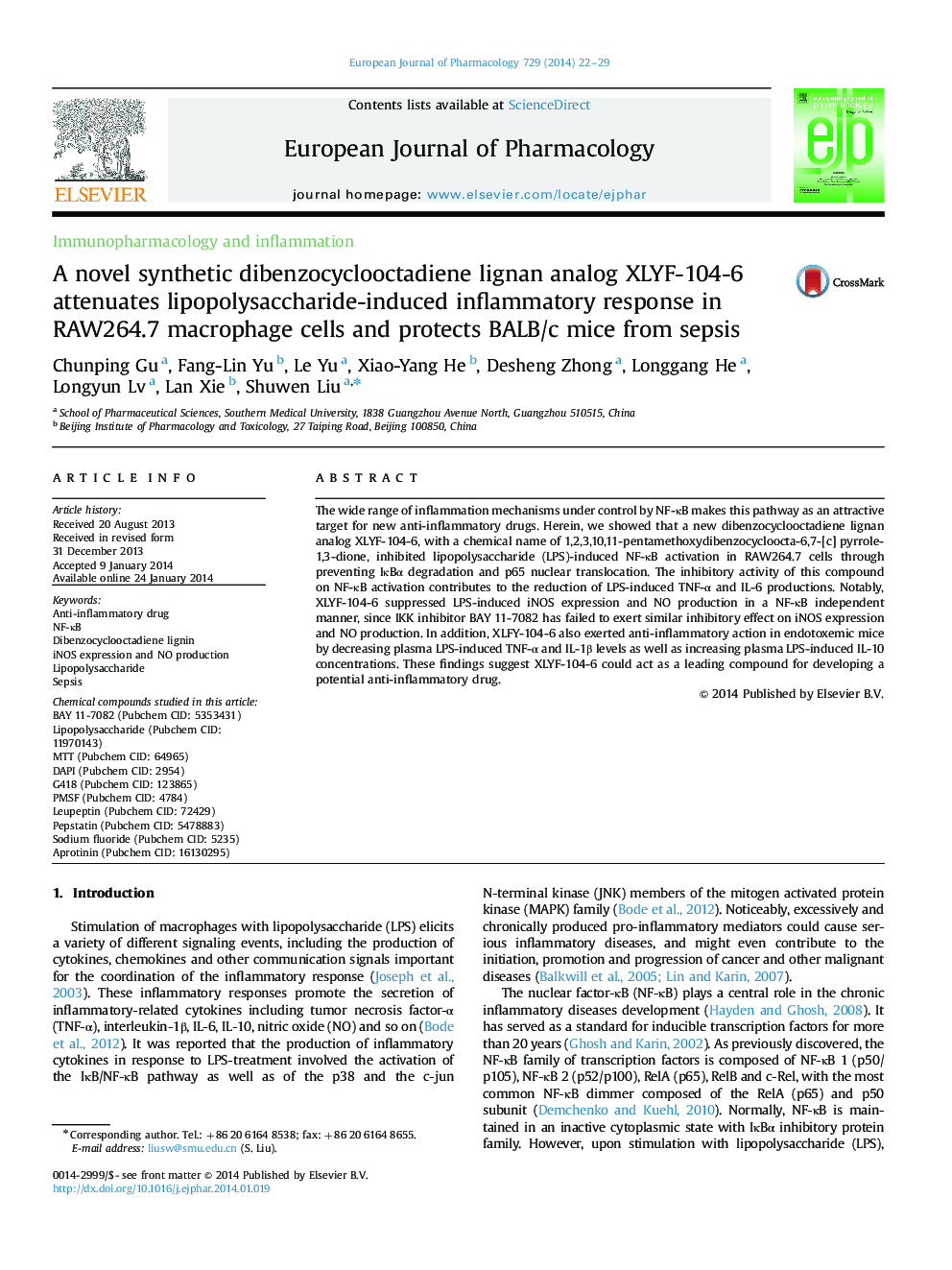| Article ID | Journal | Published Year | Pages | File Type |
|---|---|---|---|---|
| 5828105 | European Journal of Pharmacology | 2014 | 8 Pages |
Abstract
The wide range of inflammation mechanisms under control by NF-κB makes this pathway as an attractive target for new anti-inflammatory drugs. Herein, we showed that a new dibenzocyclooctadiene lignan analog XLYF-104-6, with a chemical name of 1,2,3,10,11-pentamethoxydibenzocycloocta-6,7-[c] pyrrole-1,3-dione, inhibited lipopolysaccharide (LPS)-induced NF-κB activation in RAW264.7 cells through preventing IκBα degradation and p65 nuclear translocation. The inhibitory activity of this compound on NF-κB activation contributes to the reduction of LPS-induced TNF-α and IL-6 productions. Notably, XLYF-104-6 suppressed LPS-induced iNOS expression and NO production in a NF-κB independent manner, since IKK inhibitor BAY 11-7082 has failed to exert similar inhibitory effect on iNOS expression and NO production. In addition, XLFY-104-6 also exerted anti-inflammatory action in endotoxemic mice by decreasing plasma LPS-induced TNF-α and IL-1β levels as well as increasing plasma LPS-induced IL-10 concentrations. These findings suggest XLYF-104-6 could act as a leading compound for developing a potential anti-inflammatory drug.
Keywords
Related Topics
Life Sciences
Neuroscience
Cellular and Molecular Neuroscience
Authors
Chunping Gu, Fang-Lin Yu, Le Yu, Xiao-Yang He, Desheng Zhong, Longgang He, Longyun Lv, Lan Xie, Shuwen Liu,
